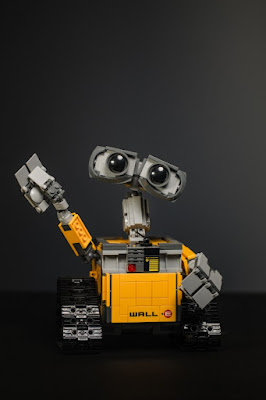Robots with artificial intelligence (AI) have computer vision that allows them to navigate, assess their environment, and decide how to react. Through the process of machine learning, which is also a component of computer programming and AI, robots learn how to carry out their tasks from humans.
Artificial intelligence is designed to make decisions that have the highest probability of success. A robot has a physical shape, and depending on the work at hand, it may or may not need artificial intelligence. In contrast, since AI is a software programmed it is not physically required.
How many artificial intelligence robots are there in the world
According to Rian Whitton, who studies the industrial robotics business at ABI Research, there are already about 2,000 AI-powered robots in use, with a typical warehouse holding one or two of them.
Our examination of journal publications and conference papers included in the Dimensions database shows that the global output of AI research increased by more than 600% from little over 52,000 in 2000 to almost 403,000 in 2019.
The most recent estimate of the global population of industrial robots is three million, according to statistics from a 2021 "World Robotics" report.
How many types of robots are there in the world?
1. articulated robots
2. humanoids,
3.cobots
4. autonomous mobile robots (AMRs)
5.automated guided vehicles (AGVs),
6. hybrids.
2. humanoids,
3.cobots
4. autonomous mobile robots (AMRs)
5.automated guided vehicles (AGVs),
6. hybrids.
1. articulated robots
A robot with rotating joints is an articulated robot (e.g. a legged robot or an industrial robot). Simple two-jointed structures to systems with ten or more interacting joints and materials are all examples of articulating robots. Many other sources, including electric motors, are used to power them.
2. humanoids robot
A robot that resembles the human body in shape is called a humanoid robot. The design may be for experimental objectives, such as the study of bipedal mobility, for functional goals, such as interfacing with human equipment and settings, or for other purposes.
3. cobots
A collaborative robot, commonly referred to as a cobot, is a machine that can pick up several duties and help people. Autonomous robots, on the other hand, are hard-coded to consistently perform a single task, operate independently, and remain immobile.
4. autonomous mobile robots (AMRs)
A mobile autonomous robot is more than just a programmed device. An autonomous robot is one that, in addition to its initial programming, is capable of making decisions on its own in a work environment without the assistance of a human.
5.automated guided vehicles (AGVs)
Automatic guided vehicles (AGVs) are load carriers that move along a facility's floor without a driver or operator on board. They are computer-controlled and wheel-based. Software-based guidance systems as well as sensor-based guiding systems control their movement.
6. hybrids
A "hybrid robot," also known as a "hybrid," is a cybernetic organism that takes the shape of a robot and is controlled by a computer. It combines electrical and biological components. Rat neurons that are wired to a computer chip typically make up the biological component.
what is artificial intelligence and how does it works?
Building intelligent computers that can carry out tasks that typically require human intelligence is known as artificial intelligence (AI), and it is a subfield of computer science. AI systems are already present in practically all areas of the tech industry because to developments in deep learning and machine learning.
Large data sets are combined with clever, iterative processing algorithms to create AI systems that can learn from patterns and features in the data they study. An AI system tests and evaluates its own performance after each round of data processing in order to improve.
There are four types AI they are
1. reactive machines
2. limited memory machines
3. theory of mind
4. self-aware AI.
1. reactive machines
The most fundamental form of AI is the reactive machine type. It cannot make decisions in the present by using taught or recalled information; instead, it can only respond to current situations. Maps and other pre-planning tools are completely eliminated in reactive machines, which instead concentrate on in-the-moment observations of their surroundings.
2. limited memory machines
Small Memory. The capacity of an A.I. to keep past data and/or forecasts and use that information to update future predictions is referred to as limited memory types. Machine learning architecture gets a little bit more complicated when there is limited memory.
3. theory of mind
The term "theory of mind" in psychology refers to the idea that humans have ideas, feelings, and emotions that influence their behaviour. Future AI systems must learn to comprehend the fact that everyone has ideas and feelings, including AI objects and human beings. To be able to interact with us, future AI systems will need to be able to adapt their behavior.
4. self-aware AI.
AI that is aware of itself and can understand its internal states as well as the emotions, behavior, and intelligence of others is referred to as self-aware AI.


